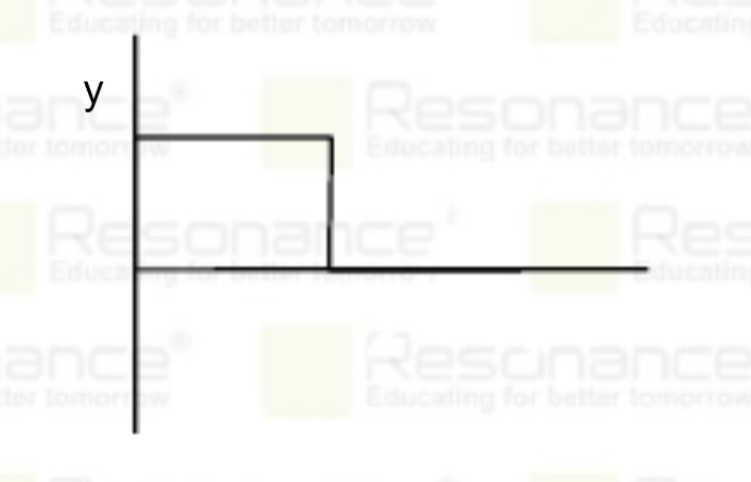Which of the following circuits provides full wave rectification of an ac input?




The correct Answer is:D
To determine which circuit provides full wave rectification of an AC input, we need to understand the concept of rectification and the operation of diodes in a rectifier circuit.
1. Understanding Rectification:
- Rectification is the process of converting alternating current (AC) into direct current (DC). A rectifier is the device that performs this conversion.
2. Types of Rectification:
- Half Wave Rectification: In this method, only one half (either positive or negative) of the AC waveform is allowed to pass through, while the other half is blocked. This results in a pulsating DC output.
- Full Wave Rectification: In this method, both halves of the AC waveform are utilized, resulting in a smoother DC output. This can be achieved using a bridge rectifier or a center-tapped transformer with two diodes.
3. Analyzing the Options:
- We need to analyze the given options (circuits) to see which one allows both halves of the AC waveform to be converted into DC.
4. Option Analysis:
- Option 1: This circuit likely allows only one half of the AC waveform to pass through, resulting in half wave rectification. Thus, it does not provide full wave rectification.
- Option 2: Similar to option 1, this circuit may also only allow one half of the waveform to pass, indicating it does not achieve full wave rectification.
- Option 3: This option may not complete the circuit for both halves of the AC input, leading to a zero output for one of the cycles, hence it does not provide full wave rectification.
- Option 4: This circuit is designed to allow both halves of the AC waveform to pass through, utilizing diodes in such a way that both positive and negative cycles are converted into DC. This is the hallmark of full wave rectification.
5. Conclusion:
- After analyzing all options, Option 4 is the circuit that provides full wave rectification of an AC input.
Final Answer:
Option 4 provides full wave rectification of an AC input.
- Rectification is the process of converting alternating current (AC) into direct current (DC). A rectifier is the device that performs this conversion.
- Half Wave Rectification: In this method, only one half (either positive or negative) of the AC waveform is allowed to pass through, while the other half is blocked. This results in a pulsating DC output.
- Full Wave Rectification: In this method, both halves of the AC waveform are utilized, resulting in a smoother DC output. This can be achieved using a bridge rectifier or a center-tapped transformer with two diodes.
- We need to analyze the given options (circuits) to see which one allows both halves of the AC waveform to be converted into DC.
- Option 1: This circuit likely allows only one half of the AC waveform to pass through, resulting in half wave rectification. Thus, it does not provide full wave rectification.
- Option 2: Similar to option 1, this circuit may also only allow one half of the waveform to pass, indicating it does not achieve full wave rectification.
- Option 3: This option may not complete the circuit for both halves of the AC input, leading to a zero output for one of the cycles, hence it does not provide full wave rectification.
- Option 4: This circuit is designed to allow both halves of the AC waveform to pass through, utilizing diodes in such a way that both positive and negative cycles are converted into DC. This is the hallmark of full wave rectification.
- After analyzing all options, Option 4 is the circuit that provides full wave rectification of an AC input.
Option 4 provides full wave rectification of an AC input.
Topper's Solved these Questions
- SEMICONDUCTOR ELECTRONICS : MATERIALS , DEVICES AND SIMPLE CIRCUITS Book:NCERT FINGERTIPSChapter:SEMICONDUCTOR ELECTRONICS : MATERIALS , DEVICES AND SIMPLE CIRCUITS Exercise:Special Purpose P-N Junction Diode
Explore 8 Videos
- SEMICONDUCTOR ELECTRONICS : MATERIALS , DEVICES AND SIMPLE CIRCUITS Book:NCERT FINGERTIPSChapter:SEMICONDUCTOR ELECTRONICS : MATERIALS , DEVICES AND SIMPLE CIRCUITS Exercise:Junction Transistor
Explore 33 Videos
- SEMICONDUCTOR ELECTRONICS : MATERIALS , DEVICES AND SIMPLE CIRCUITS Book:NCERT FINGERTIPSChapter:SEMICONDUCTOR ELECTRONICS : MATERIALS , DEVICES AND SIMPLE CIRCUITS Exercise:Semiconductor Diode
Explore 12 Videos
- RAY OPTICS AND OPTICAL INSTRUMENTSBook:NCERT FINGERTIPSChapter:RAY OPTICS AND OPTICAL INSTRUMENTSExercise:Assertion And Reason
Explore 15 Videos
- WAVE OPTICSBook:NCERT FINGERTIPSChapter:WAVE OPTICSExercise:Assertion And Reason
Explore 15 Videos
Similar Questions
Knowledge Check
To obtain full wave rectification, we require
Aonly one diodeBtriodeCtwo diodesDtransistorThe following inputs are given to following circuit
 A
A B
B C
C D
D
Which of the following wave can not be produced by charges accelerating in AC circuits having an inductor and capacitor?
ARadio waveBMicrowaveCInfraredDNone of these
What is rectification? With the help of labelled circuit diagram explain half wave rectification using a junction diode.
View SolutionDraw circuit diagram for a full wave rectifier and show input output voltages.
View SolutionWhich of the following statement is incorrect about AC circuit?
View SolutionDraw the cirucit of full wave recitfier with capacitor filter also draw the input and output voltage of this circuit
View SolutionWhich of the following components of a LCR circuit, with a.c. supply, dissipates energy?
View Solution


